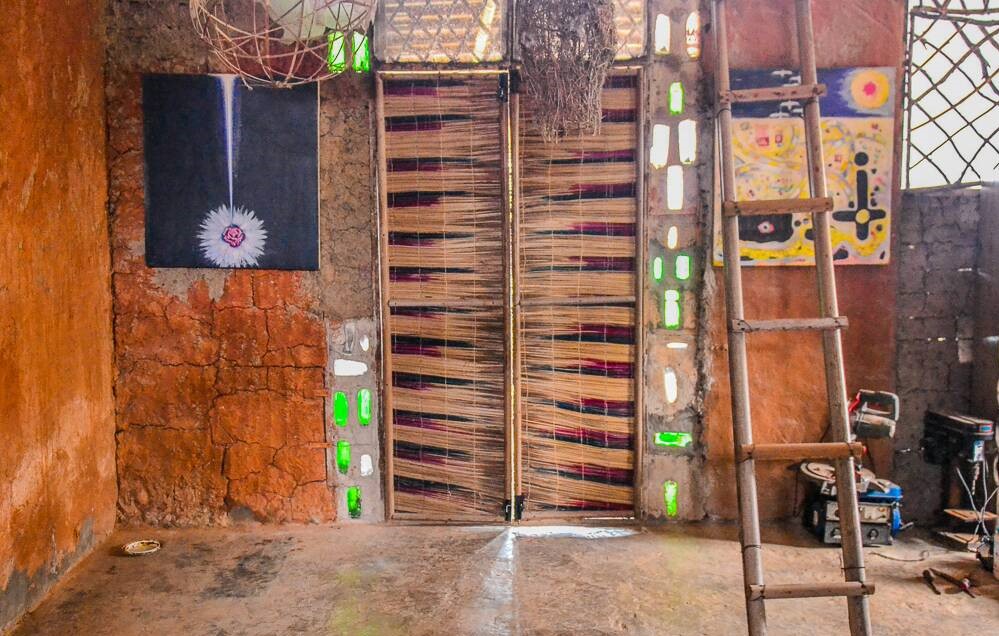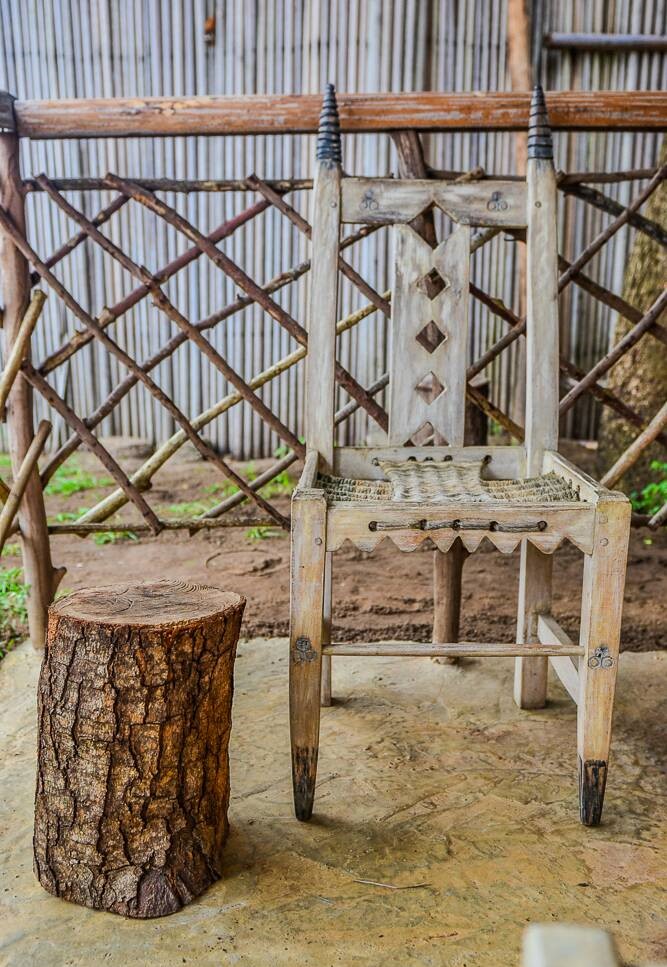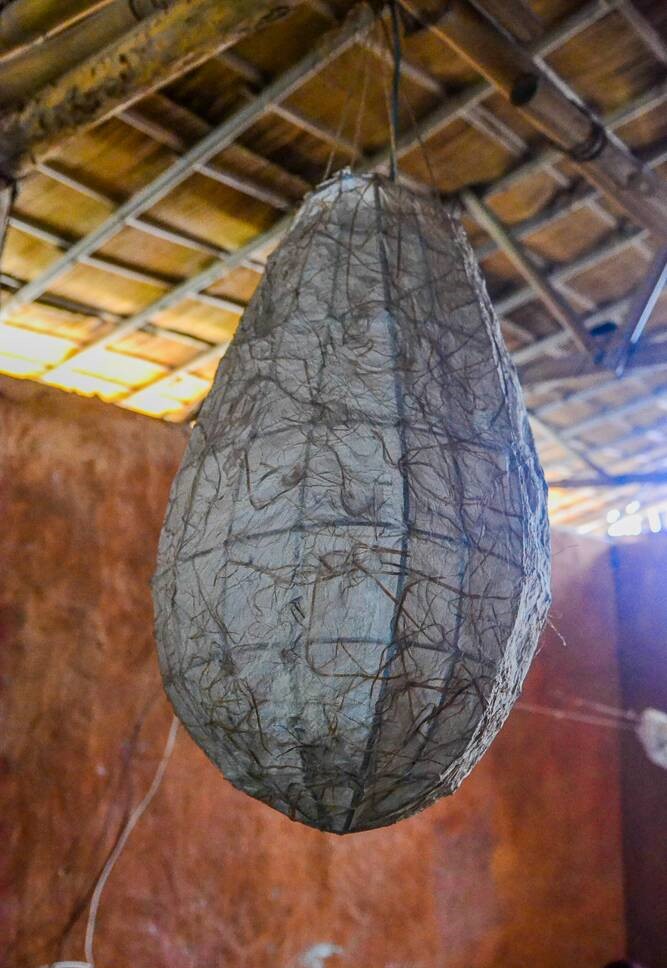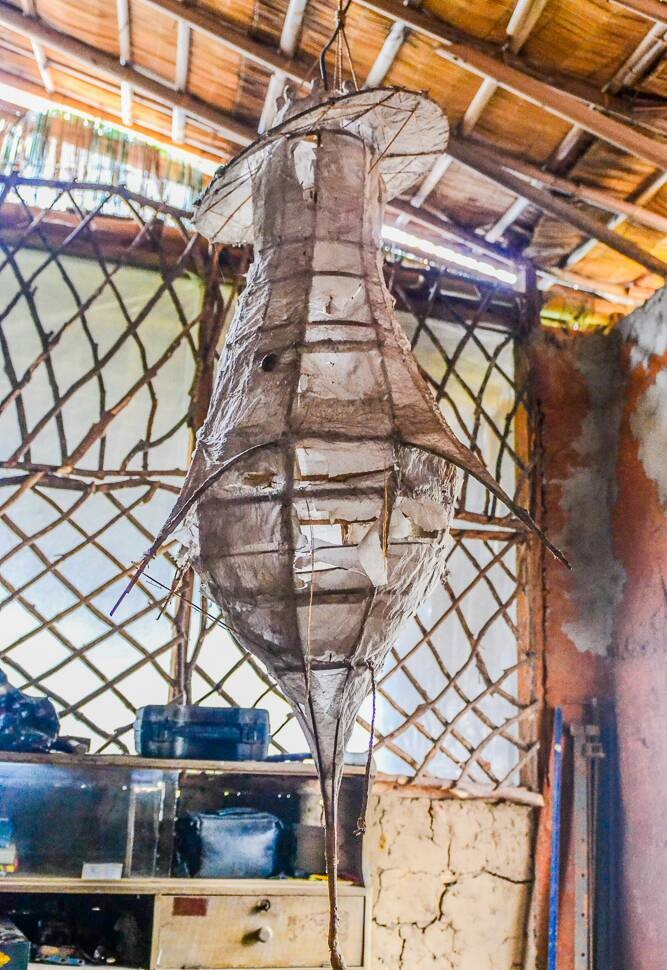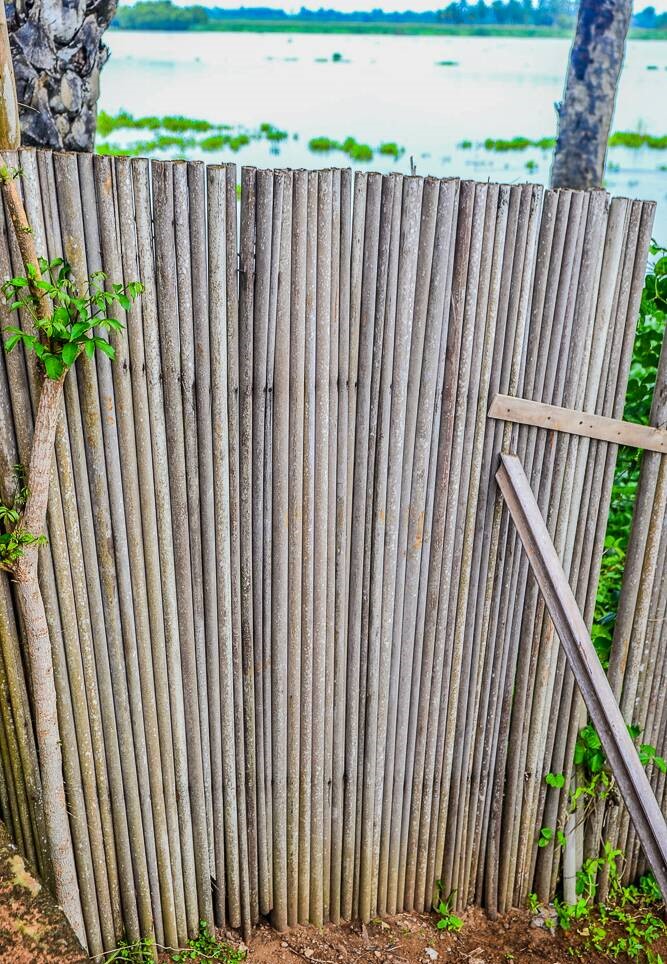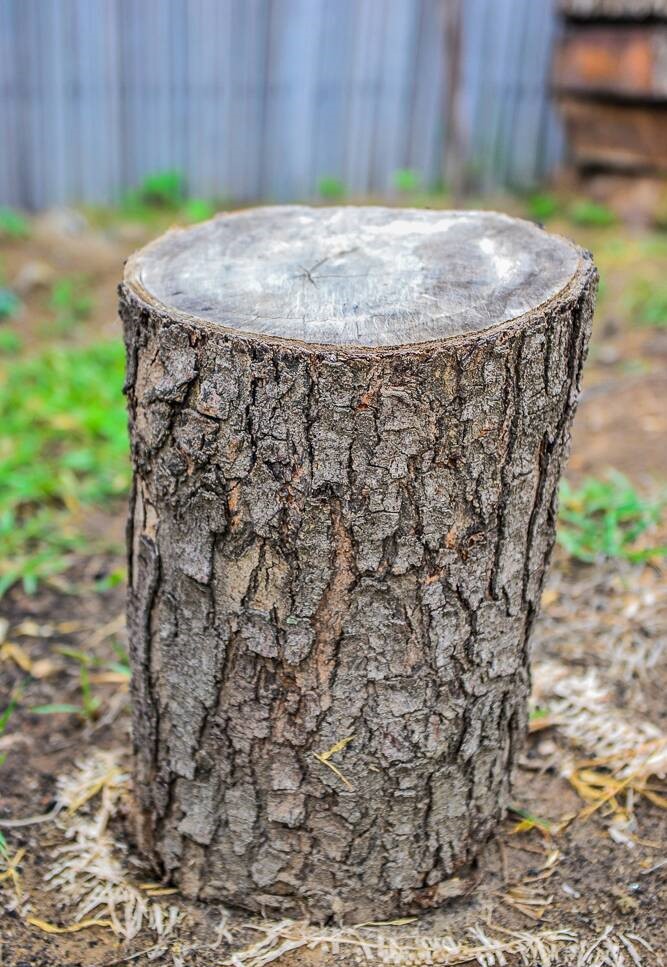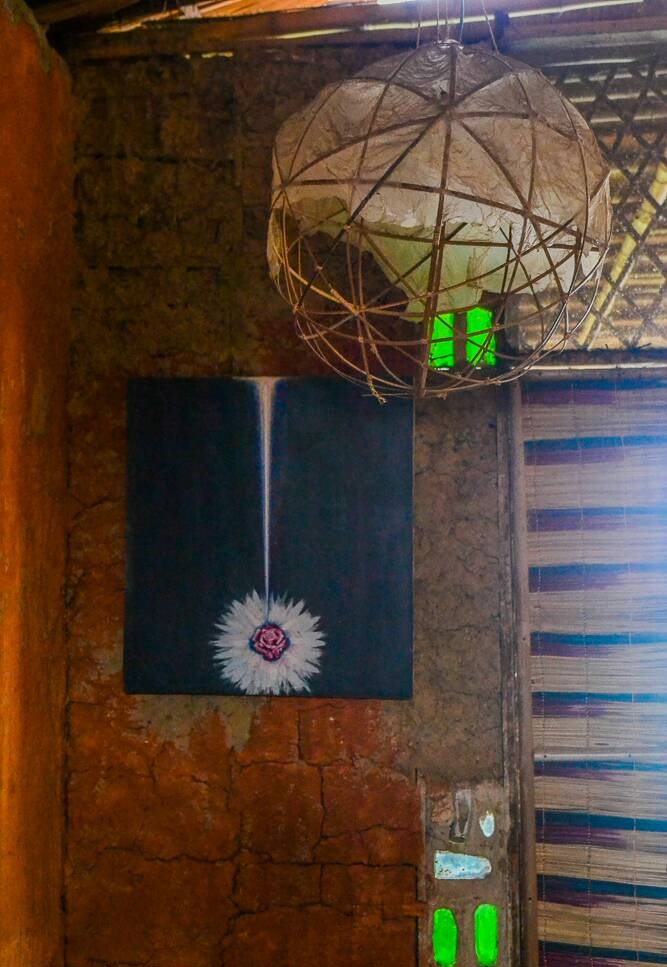Tucked inside the little village of Povita, Badagry is Charles Okereke’s ‘Alexander Academy of Arts, Design and Alternative Methods’.
The academy is the visual artist/ sculptor’s experimental project on the return to the use of renewable building materials (such as mud, timber, bamboo, grass, raffia and reed) for the construction of homes. Charles believes that the use of these materials will help reduce greenhouse emissions and possibly, mitigate the effects of climate change. A visit to his project convinced me that it is possible to build with nature’s gift and live healthier than we live in our cities.
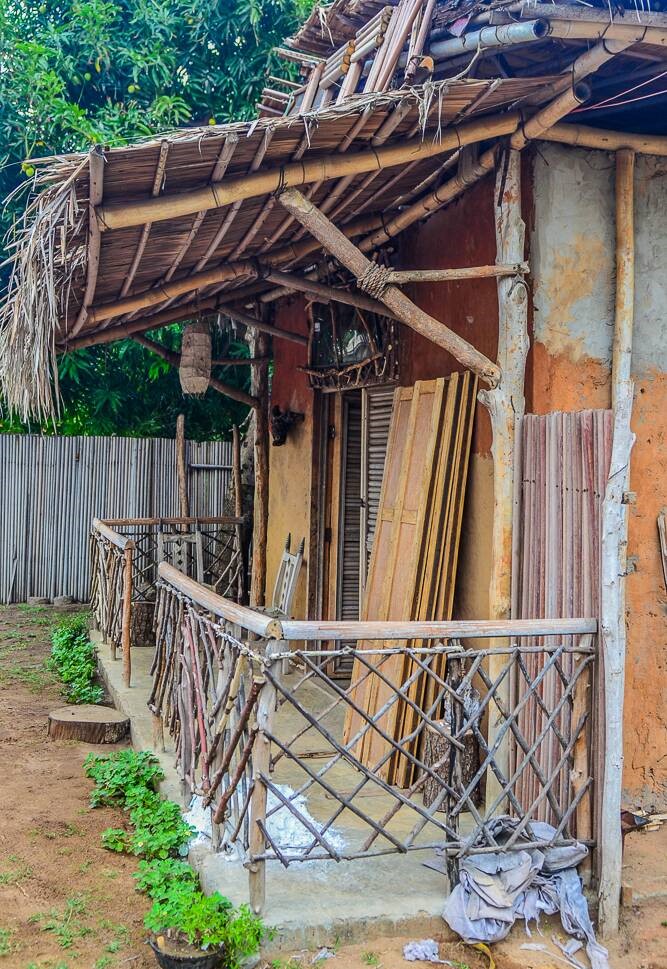
Institutions are major stakeholders to the research and development of locally manufactured and sustainable materials, but, our universities are far from becoming research oriented. For this reason, they continue to neglect the need to shift from the regular use of concrete and steel which are (mostly) not environmentally friendly. The Alexander Academy of Arts, Design and Alternative methods is a 75sqm (15x5m) structure with mud walls and raffia roof, with reed used for the ceiling. There are vertical roof supports constructed with timber and bamboo, at two different spots in the interior, and although Charles says he plans to make use of renewable energy, one easily sees electric cables from the government grid which supplies electricity to the academy. There is, however, a serenity and quietness felt inside. The temperature is always stable and comforting, and the sculptor says it’s never too hot or too cold. He insists that our renewable building materials ‘understand’ our needs as Africans, hence, we must try to understand and use them.
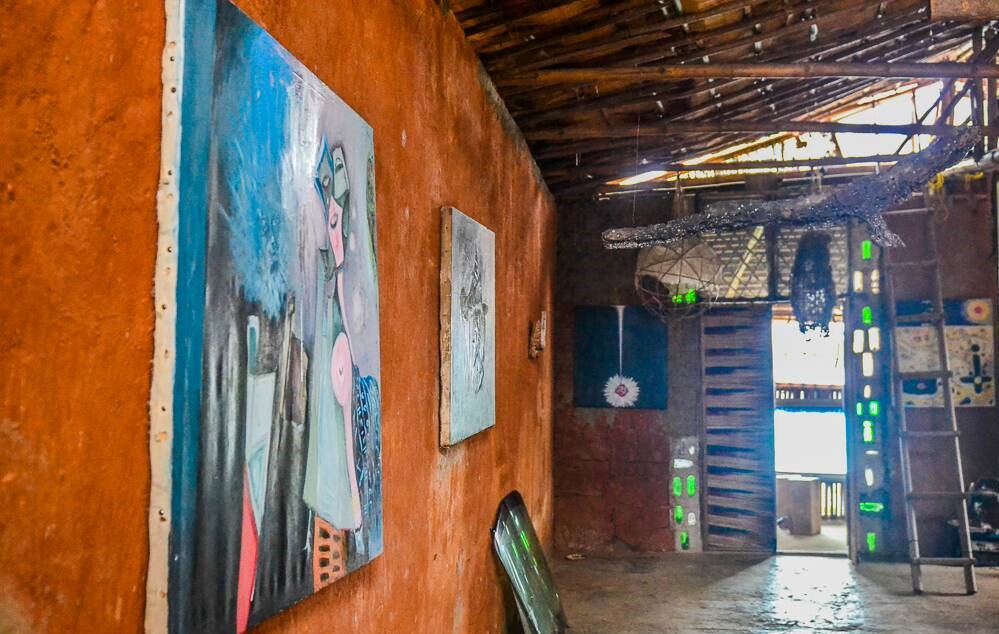
Renewable and sustainable building materials are cost effective in the long run, and require minor maintenance. Baked mud bricks or blocks are rarely painted, as they already have a unique aesthetic. Even though home owners may prefer some form of screeding on the interior, the exterior is usually left in it’s natural state. This reduces the cost of subsequent maintenance by a large degree. Also, the use of reeds and raffia, if improved on, will be beneficial in eliminating huge construction and maintenance cost. The benefits of regulating temperature, aestethics, reducing maintenance cost and others, reinforces why we should put more effort into developing these materials.
The interior showcasing a range of locally sourced materials including the recycled gin bottles embeddedin the mud wall to adminster light.
The academy, which is still under construction (70% complete) is an exemplary attempt at sustainable design in relation to traditional African Architecture. It also celebrates handcrafted home furniture, light fittings and inventions, such as the use of recycled gin bottles that lets in sunlight in different shades and colours. Charles Okereke, who classed himself as an Environmental Sculptor, admits that the building is not finely finished, and that a few structural errors have also been made. But he insists that it’s time for institutions and enthusiasts to join the research which is expected to reimagine what African Architecture used to be and create a better version of it. As mentioned earlier, the building materials used for the project are quite sustainable, affordable and renewable. The hope is that individuals and institutions wake up to this research as it would not only define our identity and architecture, but also help the environment and impact our collective wealth as a nation. Materials would be sourced and produced locally, reducing the need for importation of alternative and non-ecofriendly options.
Charles Okereke is determined to take this project to completion, which in the future will attract regular visits from Architecture and Visual Arts students and professionals. It will also become an inspiring and insightful tourist destination for anyone in Badagry.
Charles insists that African Architecture and Arts must be cultivated to grow beyond what it is, to a point where it becomes instrumental in developing future cities and helps to reduce poverty and overpopulation. The Alexander Academy of Arts, Design and Alternative Methods, offers a sustainable and low-cost building model that can be a solution to challenges of affordable housing as well as the provision of shelter for the urban poor and homeless in our African cities.
Photography: Omoregie Osakpalor






